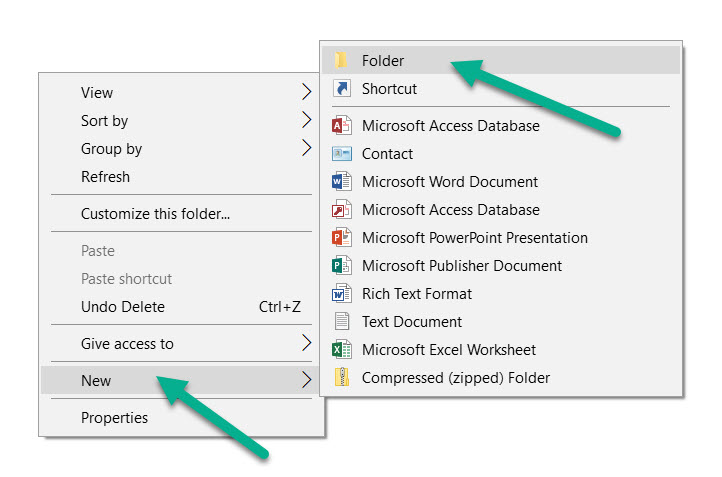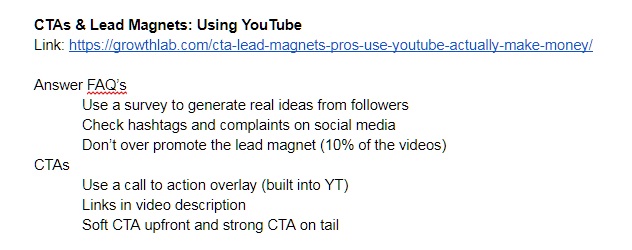A swipe file is literally a file containing inspiring content.
Think of them like a designer’s mood board. Or, an inspiration board.
Copywriters use them all the time. You can use them, too!
We’re going to take you through the process of creating swipe files for business. This will include some items you’ll want to collect. And, an easy way to put it all together so you’re not overwhelmed by tons of disorganized files.
What is a Swipe File? Do I Need One?
The swipe file represents their notes and data collected on competitors. But, also includes things they found interesting like graphics, videos, or blog posts. The file may contain any number of media items whether it’s screenshots of landing pages or copies of emails they felt effective.
A swipe file is:
- There to help you understand the competition
- A collection to generate ideas for campaigns
- A set of references and resources
A swipe file is not:
- An open invitation to copy a competitor
- A reason to get lazy in your work
- Something you rarely update and forget
Creating a swipe file is essentially like taking notes on a topic but with one major difference …
Swipe files contain items having already been tested.
It’s part of the competitor analysis you’d create to find business opportunities.
A swipe file lets you bypass the grueling stage of development. You’re tapping others’ work as inspiration — knowing it’s effective — giving you a solid foundation for what you had in mind. It also presents an opportunity to gain a leg up on the competition if you are willing to see their pitfalls and mistakes.
Developing a new campaign from its insights will get your projects done faster. Faster launches mean less you spend, and the earlier you can fail to work on the next so you’re not dragging your feet.
What Should I Swipe for My File?
The short answer: Everything.
The long answer:
- Logos
- Landing Pages
- Banner Ads
- Headlines
- Emails
- Product Pages
- About Us Pages
- Layouts
- Testimonials
- Flyers
- Brochures
- Business Cards
- Forms
- Quotes
- Tables
- Call-to-Actions
- Pop-up Boxes
- Signatures
- Author Bios
- Videos
…anything relevant to your project you could find inspiration from. But, also include some things outside your niche to challenge ideas. It becomes a hodge-podge of inspiration, really.
Creating a Swipe File: The Three Easy Steps
Here’s the short version:
1. Create a folder called “Swipe File” or start a Pinterest board for the swipe
2. Grab screenshots, downloads, and copies of competitor marketing efforts
3. Take notes on each collected item about what you liked about them
That’s a very basic, simplified version but it does give you the necessary understanding of what’s needed to create this file. There’s more to gain if you’re willing to make the extra effort.
Here’s the long version:
1. Creating the File
Go to an area on your computer you frequently work from (I have an “Online Project” folder).
From here create a new Folder and call this Swipe File.

I would then advise setting this folder as a regular backup on a service like Box or Dropbox just in case something messes up and you lose the data.
You may also want to, at a later point, upload this information to a location like Google Drive or SkyDrive to make edits online.
2. Organize the Information
Once you have the main Swipe File folder created I would recommend creating a folder for each competitor or one based on the main category.
Option A: [Competitor] -> Emails, Blog Posts, Graphics, Social Updates, Advertising
Option B: Emails, Blog Posts, Graphics, Social Updates, Advertising
Overall – the folders are in place to help keep things well organized.

The subfolders help you avoid having hundreds of files to sort through. This becomes a pain if you become lazy with the file name structure.
You’re not limited to just these categories, obviously. I’d encourage you to expand on what areas of the competition you track. This could include video media, podcasts, and scanned print materials.
3. Take Short Notes
I would recommend creating a Word or Google document as the main set of notes per category.
These notes will be related to each of your entries. You may use those as a building block to begin generating ideas. It’s important to take notes moments after snipping the item so you’re taking emotional notes of how and why it’s inspiring or helpful.

I recommend you compliment each swipe with:
- A one-paragraph summary of the item
- A list of five to ten ideas generated after the piece
- Include one or two action items
These notes further inspire efforts especially if it gives you a few ideas to go above and beyond the competition. You can change this to however you want, sometimes a short blurb is enough.
How to Use a Swipe File in Business, Copywriting, and Marketing
I am choosing to leave this area sparse.
Why?
Because the swipe file isn’t meant to be an excuse to copy and paste competitor campaigns.
A swipe file is created to draw inspiration.
Yes, the data you uncover will help you target your efforts.
- Inspire Branding — See how the competition uses color, logos, and copy to create a brand. Compare that to your efforts and fill the gaps.
- Inspire Projects — See your competition trying something interesting? Or, committing to a challenge? Do one of your own, start new projects, and keep diversifying your efforts.
- Inspire Direction — See what terms and sales copy they’re using and if it resonates with an audience. Find ways to make it your own by using keywords as a baseline but injecting your personality and branding. Use it to guide your efforts if you feel lost.
But:
It’s still absolutely necessary that you tweak your campaigns to match what you are trying to offer.
The new campaign, having gained from the swipe, needs to cater to your business and be aimed at your community.
Do this: Create the swipe file, leverage its data, use it for inspiration, and create something fresh.
A quick copy and paste will merely have you playing catch up with the competition. They will remain authorities because they hit the market first. You’re always trailing in their footsteps, lagging, and never truly differentiating yourself from the rest.
A Swipe File is an Ongoing Resource
A swipe file is extremely easy to understand and get going. But it just so happens to be one of those items many marketers forgo. It’s an item they overlook because they’re too focused on trusting their gut instincts.
As you know: Successful businesses leverage data.
See the swipe file as this data — and keep filling it with anything and everything catching your attention.
Your next action is to get started.
Spend an hour of your free time collecting notes and data on the competition. Begin archiving those emails. Screenshotting great pages. Go as far as talking to their customers to hear what they have to say about the business.
Get inside their heads and figure out what makes them tick.
Then … create something amazing and give your competition a run for their money.




